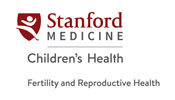Pre-eclampsia and other obstetric complications are elevated after IVF and Frozen Embryo Transfer (IVF-FET), although we do not know why. This clinical research study will compare pregnancy rates and patient experience with 2 commonly used frozen embryo transfer protocols and investigate the cause of pregnancy complications after IVF-FET.
What are the criteria to enroll in this study?
Please see below the criteria we are considering for this study.
- Women planning Frozen Embryo Transfer (FET), from embryos created with their own eggs
- Embryos frozen at the blastocyst stage (day 5-7)
- Age 18-41
- Regular menstrual cycles
- BMI (Body Mass Index) < 40
- Normal TSH and HgA1c
What factors would prevent you from participating?
You cannot enroll in the NatPro study if you check one or more of these boxes:
- Egg or embryo donation
- Gestational carrier
- Recurrent implantation failure
- Hydrosalpinx
- Contraindication to any of the study medications or pregnancy
- Anti-phospholipid syndrome
What does participation in this study involve?
- Participants will be randomly assigned to one of 2 FET protocols. Supplemented natural cycle (with hCG shot and vaginal progesterone) or programmed cycle (with oral estrogen and injectable progesterone).
- Participants can stay in the study for up to 3 embryo transfer attempts or until a successful pregnancy.
- Blood and urine samples will be collected prior to cycle start and in early pregnancy.
- When delivery occurs at Stanford hospital, participants are asked to donate their placenta to research.
- Financial compensation will be available for this study participants.

Connect with us:
Download our App: